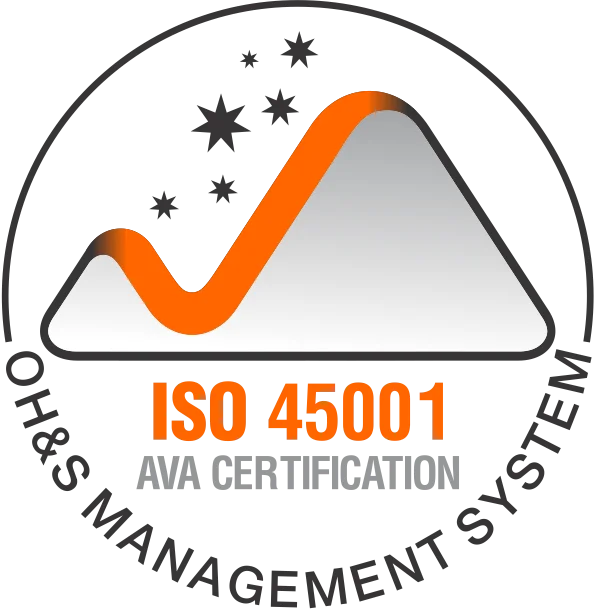ISO 45001:2018
- Home
- ISO 45001:2018
ISO 45001:2018
Occupational Health & Safety Management System
What ISO 45001:2018 means for non-emergency patient transport

ISO 45001:2018 provides a structured framework to manage those risks, ensuring that:
- Potential hazards—such as vehicle incidents, manual-handling strains, infection exposure or equipment failure—are systematically identified and controlled.
- Clear safety policies and procedures, including infection control, vehicle maintenance and incident reporting, are documented and accessible to every team member.
- Drivers, paramedics, carers and support staff are actively involved in safety decisions so their frontline insight informs our policies.
- All staff receive role-specific health and safety training, such as manual-handling techniques, infection prevention, emergency response and correct use of personal protective equipment (PPE).
- Incidents and near misses are tracked, investigated and used to strengthen our processes so that lessons become improvements.
Supporting compliance with Australian WHS law
ISO 45001:2018 is a voluntary international standard, yet its requirements align closely with Australia’s Work Health and Safety (WHS) laws, including the Model WHS Act and each state or territory’s OHS legislation.
- Primary duty of care – Australian law requires employers to ensure, so far as reasonably practicable, the health and safety of workers and others. ISO 45001 supports this by requiring proactive hazard identification, risk assessment and effective controls.
- Safe systems of work – The standard calls for documented procedures and clear accountabilities so staff always have a safe method of performing tasks such as patient lifting or vehicle loading.
- Training and supervision – Our structured induction, refresher training and competency checks demonstrate that workers receive the information, instruction and supervision mandated under WHS law.
- Worker consultation – ISO 45001 requires active participation and consultation with staff, matching the legal duty to involve workers in safety matters.
- Monitoring and review – Through regular audits, incident recording and management reviews, we meet the obligation to monitor and continually improve our safety performance.
- Emergency preparedness and response – Our emergency procedures for medical incidents, vehicle breakdowns or natural disasters meet WHS requirements for effective emergency planning.
How we put ISO 45001:2018 into practice
Risk assessment and prevention
Infection control and PPE
Manual handling and ergonomics
Vehicle and road safety
Incident reporting and investigation
Employee wellbeing
ISO 45001:2018 recognises that mental health, stress and fatigue are safety concerns. We support our team with fair rostering, rest breaks, mental-health resources and open supervision so they can provide safe, confident care.
Emergency and response planning
Supplier and contractor safety
Benefits for patients, staff and stakeholders
- For patients and families – Our ISO 45001:2018-aligned system means safer journeys, lower risk of injury or infection and confidence that their loved ones are in professional hands.
- For staff – Clear expectations, safe working conditions, comprehensive training and genuine involvement in safety decisions foster engagement and protect their wellbeing.
- For hospitals, NDIS providers and community partners – We deliver reliable, compliant services with reduced disruption and improved coordination.
- For our organisation – We reduce injury-related costs, lower insurance premiums, strengthen legal protection and build a reputation for excellence and care.
Governance, monitoring and continual improvement
To maintain and strengthen our ISO 45001:2018 system, NurseLink Healthcare has established:
- A safety management committee comprising management, clinical leaders and staff representatives.
- Regular internal and external audits to assess performance and identify areas for improvement.
- Key metrics such as incident rates, days lost to injury and patient safety indicators, all reviewed by senior management.
- Policy reviews whenever regulations, best practices or transport procedures change.
- Staff feedback channels—surveys, toolbox talks and meetings—to capture ideas and concerns that drive ongoing improvements.
Our pledge to you
Our commitment to ISO 45001:2018 reflects a promise to deliver transport services without compromise:
- Safety is embedded in every stage of our patient transport operations.
- We meet or exceed all applicable Work Health and Safety laws in Victoria and every other jurisdiction where we operate.
- We remain transparent about our safety performance and welcome feedback from patients, families and partners.
- We continuously improve, learning from experience and adopting new best practices.
Why choose NurseLink Healthcare for safe, quality patient transport
When selecting a provider for non-emergency patient transport, it is vital to choose an organisation that cares deeply and cares safely. With our ISO 45001:2018-aligned Occupational Health & Safety Management System, you can be confident that:
- Every staff member is trained and supported to work safely and respond effectively to any incident.
- Our vehicles, environments and care practices are regularly assessed for risks and those risks are controlled.
- We respond promptly and effectively to any issue to prevent harm to clients or staff.
At NurseLink Healthcare, the dignity, comfort and wellbeing of every person we support—patients and staff alike—are at the heart of everything we do.
Contact us
For more details about our ISO 45001:2018 Occupational Health & Safety Management System, or to learn how it applies to our non-emergency patient transport services, please contact:
📧 info@nurselinkhealthcare.com.au | ☎ (03) 9913 3023
NurseLink Healthcare – where safety and care go hand in hand.
